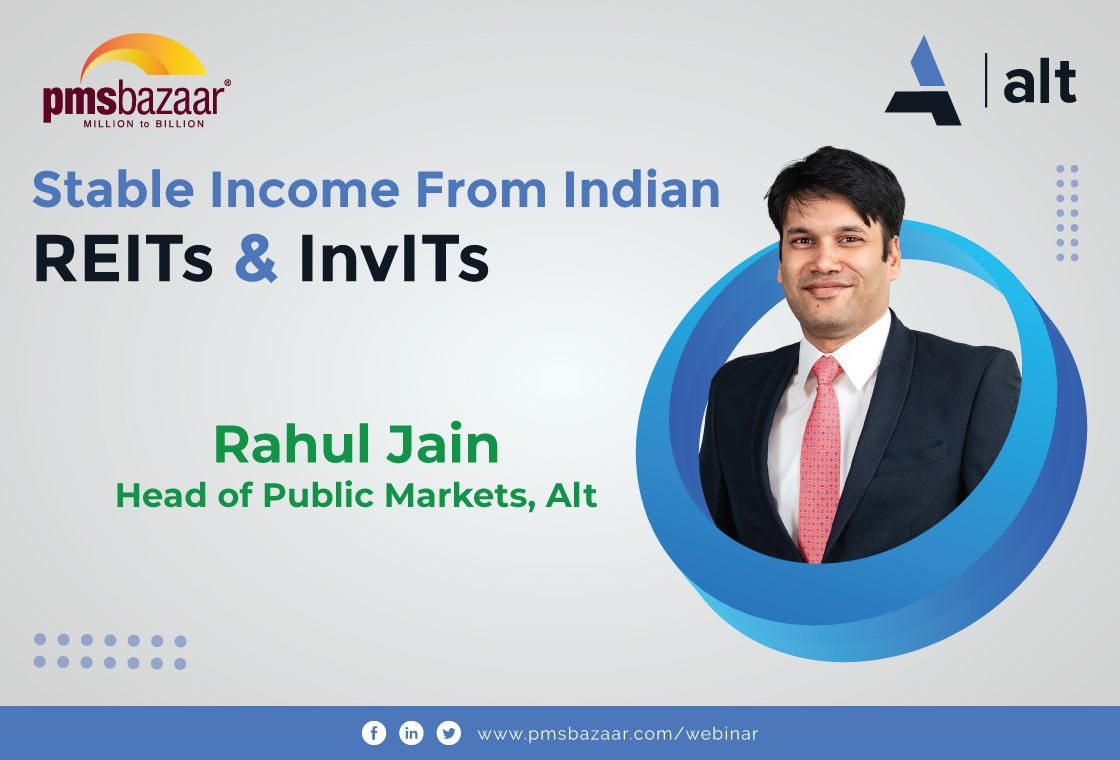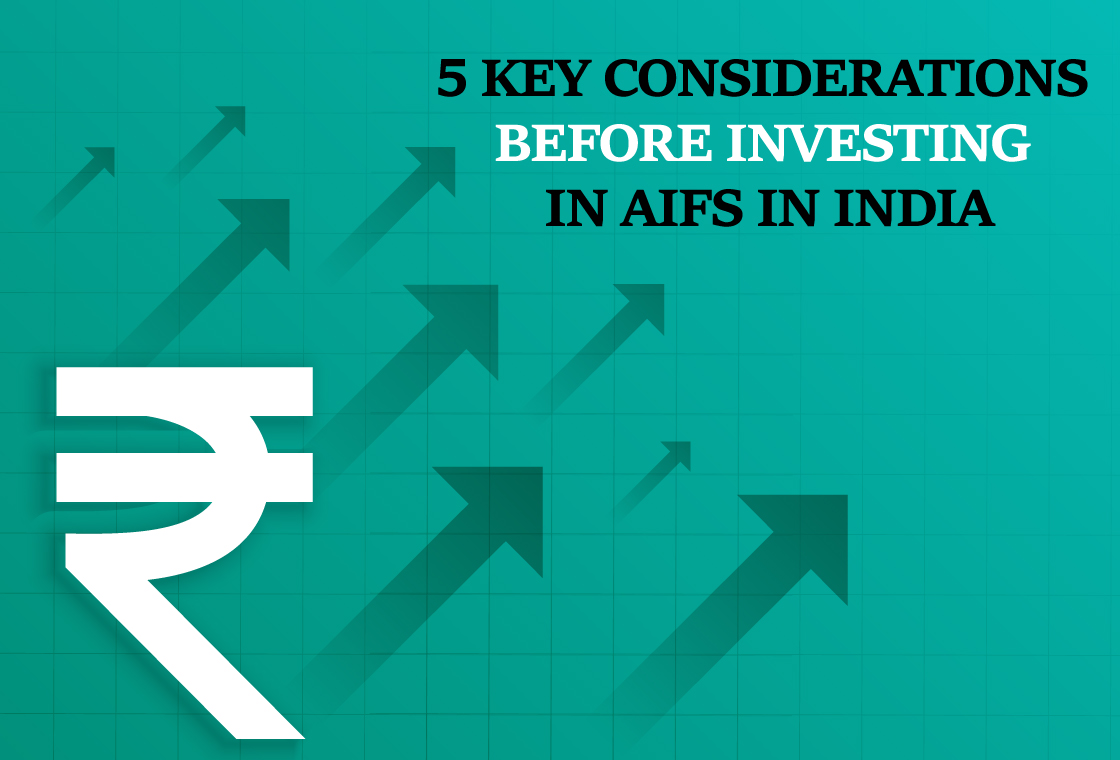PMS Bazaar recently organized a webinar titled “Risk and Reward: How to Profit from Market Movements and Harness Market Volatility,” which featured Abhishek Jaiswal and Aalap Shah, both fund managers with Dolat Capital. The webinar covered a wide range of topics, including the dynamics of market volatility, the distinction between risk and volatility, India's economic transformation and challenges, the interplay of risk and volatility, strategies for capitalizing on volatility, long-term portfolio management, investment strategies and diversification in equity markets. This blog covers the important points shared in this insightful webinar.

Key aspects covered in this webinar blog are
- Understanding the dynamics of volatility
- Distinguishing risk from volatility
- Policies driving India's transformation
- Challenges on India's economic horizon
- The interplay of risk and volatility
- Analyzing volatility over different time horizons
- Maximizing portfolio value with long-term strategies
- Understanding investment strategies and diversification in equity markets
Understanding the Dynamics of Volatility
One of the key questions that often arises in the realm of finance is whether volatility should be viewed as a risk or an opportunity. To kickstart our exploration, let's tackle this fundamental question head-on.
Volatility, in essence, represents the degree of variation in the price of a financial instrument over time. While many perceive it as a risk, seasoned investors often view it as an opportunity to capitalize on price swings. To comprehend the nuances of volatility, we need to delve into its origins. A critical factor that contributes to volatility is inflation, often considered a byproduct of economic growth.
As economies expand, they frequently experience inflation. Inflation impacts various aspects of the financial landscape, including the money supply, interest rates, spending patterns, and corporate balance sheets. These ripple effects eventually find their way into financial asset prices, contributing to heightened volatility.
Distinguishing Risk from Volatility
While economic growth is often celebrated, it's essential to recognize the potential risks that accompany it. These risks stem from factors like inflation and have widespread implications.
Inflation-induced risks manifest in reduced money supply, escalating interest rates, and shifts in personal and government spending. Moreover, they influence corporate balance sheets and introduce a layer of uncertainty into the financial landscape.
It's crucial to distinguish between risk and volatility. Risk arises from macroeconomic factors and their fallout on financial markets. Volatility, on the other hand, is the market's response to these underlying risks. In other words, volatility is a reflection of the market's reaction to risk factors. Understanding this distinction is vital for investors seeking to navigate financial markets effectively.
To illustrate the impact of volatility, let's turn our attention to the period between 2010 and 2014, marked by significant events, including rate hikes.
During this time, the market experienced fluctuations that were directly linked to macroeconomic factors. This case study will offer insights into how investors can manage and respond to volatility in a dynamic financial environment.
Policies Driving India's Transformation
India's evolution into a manufacturing hub is a remarkable transformation that was not foreseen two decades ago. This paradigm shift is primarily driven by strategic policies such as GST (Goods and Services Tax), Make in India, Atmanirbhar Bharat (Self-Reliant India), and Kati Shakti (Infrastructure Development). These policies have been instrumental in reshaping the nation's economic landscape, fostering innovation, and attracting foreign investments.
One critical element propelling India's economic engine is the historically low levels of Non-Performing Assets (NPAs). This financial stability not only fuels economic growth but also facilitates credit expansion, providing businesses and individuals with the capital needed to thrive.
Challenges on India's Economic Horizon
Despite India's significant strides, it is not immune to global economic dynamics. The prevailing issue of rising inflation rates in the Western world poses a potential challenge. The global economic slowdown could impact India's exports and necessitates a vigilant approach to navigate these shifting tides.
The next two to three decades are anticipated to be marked by geopolitical complexities. The Russia-NATO war, originating from the Russia-Ukraine conflict, has the potential to disrupt global stability. Geopolitical tensions are on the rise in various regions, creating uncertainties that can impact India's economic trajectory.
Climate change is altering global patterns, with events like Europe's hottest summer in nearly a century. These changes are reshaping consumption patterns and can have far-reaching consequences for industries and economies. Adapting to these shifts is paramount for long-term success.
India faces relentless competition from other Asian countries, a reality that is here to stay. Factors like the "China plus one" strategy are reshaping global supply chains, and India must position itself strategically to maintain its competitive edge.
India must also confront internal challenges. Managing inflation and deficits while ensuring food price stability for its vast population is a formidable task. Additionally, the looming leadership changes and potential policy paralysis due to populist trends could hinder the nation's growth.
Erratic rainfall patterns due to climate shifts pose challenges to rural demand, which plays a pivotal role in India's economic stability. Moreover, harnessing the demographic dividend, which entails preparing the workforce for skilled jobs, is a critical challenge that requires astute policy planning.
The Interplay of Risk and Volatility
Volatility, often viewed as a financial risk, is not a standalone risk factor but a reflection of underlying economic dynamics. Inflation emerges as a central issue in understanding volatility. As economies grow, inflation can become a natural byproduct. Inflationary pressures can lead to a reduction in money supply, rising interest rates, and subsequent shifts in personal and government spending, all of which influence corporate balance sheets.
Inflation is a core issue that often arises in discussions about economic growth. While many focus on the positive aspects of growth, it's essential to consider its byproduct: inflation. In this section, we'll delve into the implications of inflation and how it affects various aspects of the economy.
When inflation sets in, it triggers a series of problems. One of the first effects is a reduction in the growth of the money supply. As a result, interest rates start to rise. This shift in the financial landscape has significant consequences for both individuals and businesses, particularly their balance sheets.
The increase in interest rates and reduced money supply leads to a decrease in personal and government spending. This decrease ripples through the corporate world, affecting both top and bottom lines. Corporate top lines take a hit as consumer spending declines, while the midline suffers due to higher interest rates, increasing working capital requirements, and debt interest.
As a consequence of these changes, the profit and loss statements (P&Ls) and balance sheets of corporations become less transparent. This haze introduces risk to the assets and, subsequently, volatility in stock prices. It's important to note that risk and volatility are distinct but interconnected elements. Risk originates from macroeconomic factors, while volatility is what we observe in asset prices.
Analyzing Volatility Over Different Time Horizons
Volatility serves as a measure of risk, specifically returns risk. There are two primary ways to measure volatility: historical volatility, which looks at past data, and implied volatility, which comes from options pricing.
One effective way to capitalize on volatility is through options arbitrage. Options carry implied volatility, which is a key component of their pricing. Market participants can trade on this volatility, leading to opportunities for profit. Options arbitrage involves creating arbitrage positions based on various option strikes, enabling traders to benefit from both time value and volatility.
Risk management is crucial in options arbitrage due to the potential for sharp market moves. Stringent risk management processes, often driven by technology, are essential to mitigate losses. The long-shot strategy can be utilized to navigate the complexities of volatile markets. This strategy involves making bets on extreme market movements, making it essential to manage risk carefully.
Maximizing Portfolio Value with Long-Term Strategies
Shifting the focus to portfolio management, the presentation emphasizes the importance of long-term strategies in enhancing portfolio value. It highlights the significance of processes, risk management, and the people behind the strategy as critical factors in achieving consistent performance.
Understanding Investment Strategies and Diversification in Equity Markets
In the world of finance, it's crucial to navigate through the ever-changing landscape of investment strategies. One fascinating case study that sheds light on this is the performance of various strategies in equity markets. These strategies can be categorized into eight distinct types: Value, Nifty, Dividend, Size as Mid-Cap, Low Volatility, Quality, Momentum, and Flow. However, it's important to recognize that in equity markets, these strategies go through cycles.
Cycling of Investment Strategies
Not every strategy will yield returns consistently. Some may underperform for a while before bouncing back, while others might outperform. Let's take the example of the "Value" strategy. During 2018-2019, it delivered negative returns of approximately 26% and was ranked at the bottom, occupying the 14% position in terms of performance. Why did this happen? The primary reason was the declining interest rates during that period. However, fast forward to 2021-22, and the same strategy was at its peak performance. This demonstrates the cyclic nature of investment strategies in the equity market.
Diversification as a Solution
Given the unpredictability of these cycles, diversification emerges as a sensible approach. Investors should not put all their eggs in one basket. By spreading investments across various strategies, the risk of relying on a single strategy's performance is mitigated. Diversification acts as a safeguard against the inherent fluctuations in the equity market.
Exploring Investment Strategies: Category AF
Now, let's delve into a specific category of the business known as category AF. This discussion focuses on the strategies within this category, particularly in the context of long-short investments.
1. Single Strategy Absolute Return: This category primarily includes market-neutral strategies. Market-neutral strategies are characterized by maintaining a net exposure within a specified range, typically between +5% and -5%. These strategies often operate across different asset classes, aiming to achieve consistent returns.
2. Absolute Return Strategies: In this category, investors have the flexibility to choose from various asset class combinations. This includes combinations such as arbitrage and a long-short equity strategy, debt paired with a long-short strategy, or fixed income alongside a long-short strategy. The goal is to generate stable returns with different asset class combinations.
3. Multi-Strategy Absolute Return Funds: Multi-strategy absolute return funds leverage a combination of strategies to achieve stable returns with minimum fluctuations. By diversifying across strategies, these funds aim to provide investors with consistent performance.
4. Long-Short Fund Benchmark:
This strategy involves outperforming a benchmark over a specific market cycle while minimizing drawdowns. Achieving this balance requires reducing participation in market downturns through adjustments in net exposure and potentially using leverage, permitted up to 2x in Category 3 by SEBI.
Comparing Long-Only and Long-Short Strategies
Now, let's compare two distinct investment approaches: long-only and long-short strategies, focusing on various parameters.
1. Hedging and Shorting: In a long-only strategy, when markets reach all-time highs, the options are somewhat limited. Long-only managers can rely on cash flows or choose defensive stocks. In contrast, long-short fund managers have more flexibility. They can reduce their net exposure, effectively reducing their participation in market downturns, or even go net short, allowing for a negative exposure.
2. Time Horizon: Long-only fund managers typically have a long-term investment horizon, often spanning 3 to 10 years. In contrast, long-short strategies, given their focus on downside protection, have a shorter investment horizon, typically between 1 to 3 years. However, it's crucial to note that long-short funds, particularly benchmarked ones, aim to minimize losses rather than achieve negative returns.
3. Time Cycle: Investment time cycles also differ between long-only and long-short strategies. Long-only funds advocate a 3 to 5-year or longer investment horizon, while long-short strategies operate within a shorter 1 to 3-year time frame.
4. Sector Agnostic Approach: Long-only funds often find themselves constrained by benchmark indexes, requiring them to be in line with the index's sector allocation. Long-short strategies, on the other hand, face no such restrictions and can allocate up to 10% in a single stock, allowing for greater flexibility.
Mr. Abhishek and Mr. Aalap covered all the topics mentioned above in-depth and answered questions from the audience toward the end of the session. For more such insights on this webinar, watch the recording of this insightful session through the appended link below:
Get access to rich data and analytics of PMS & AIF by subscribing to us. Join the 55000+ investors & experts now: Subscribe NOW
Recent Blogs
.jpg)
Passively Active Investing — A Modern Investor’s Lens on ETF-Based PMS
PMS Bazaar recently organized a webinar titled “Passively Active Investing — A Modern Investor’s Lens on ETF-Based PMS,” which featured Mr. Karan Bhatia, Co-Founder and Co-Fund Manager , Pricebridge Honeycomb ETF PMs. This blog covers the important points shared in this insightful webinar.

Spot the Trouble: Red Flags in Equity Investment Analysis
PMS Bazaar recently organized a webinar titled “Spot the Trouble: Red Flags in Equity Investment Analysis,” which featured Mr. Arpit Shah, Co-Founder & Director, Care Portfolio Managers. This blog covers the important points shared in this insightful webinar.

Long-Only AIFs Rebound Sharply in October; Long-Short Strategies Lag Despite Lower Volatility
106 long-only AIFs averaged 3.68% vs 32 long-short AIFs at 2.7%; only 24–31% of funds beat key indices

Markets log strongest monthly gains in 7 months; PMS performance turns near-uniform in October
Nifty 50 TRI gained 4.62%, BSE 500 TRI rose 4.27%; 415 of 427 equity PMSes ended positive

How SMEs are Shaping India’s Investment Landscape?
PMS Bazaar recently organized a webinar titled “How SMEs are Shaping India’s Investment Landscape?” which featured Mr. Shrikant Goyal, Fund Manager, GetFive Opportunity Fund.

Stable Income from Indian REITs and InvITs
PMS Bazaar recently organized a webinar titled “Stable Income from Indian REITs and InvITs,” which featured Mr. Rahul Jain, Head of Public Markets, Alt.

5 Key Considerations Before Investing in AIFs in India
Alternative Investment Funds (AIFs) have emerged as a compelling option for sophisticated investors seeking diversification and potentially superior returns. But venturing into AIFs requires a clear understanding of their unique characteristics that go beyond simply knowing what they are and their categories.

How AIF can help in diversification?
Traditionally, Indian investors have relied on a mix of stocks and bonds to build their wealth. While this approach offers diversification, it can still leave your portfolio vulnerable to market fluctuations. Enter Alternative Investment Funds (AIFs), a dynamic asset class gaining traction for its ability to unlock diversification beyond the realm of conventional options.

